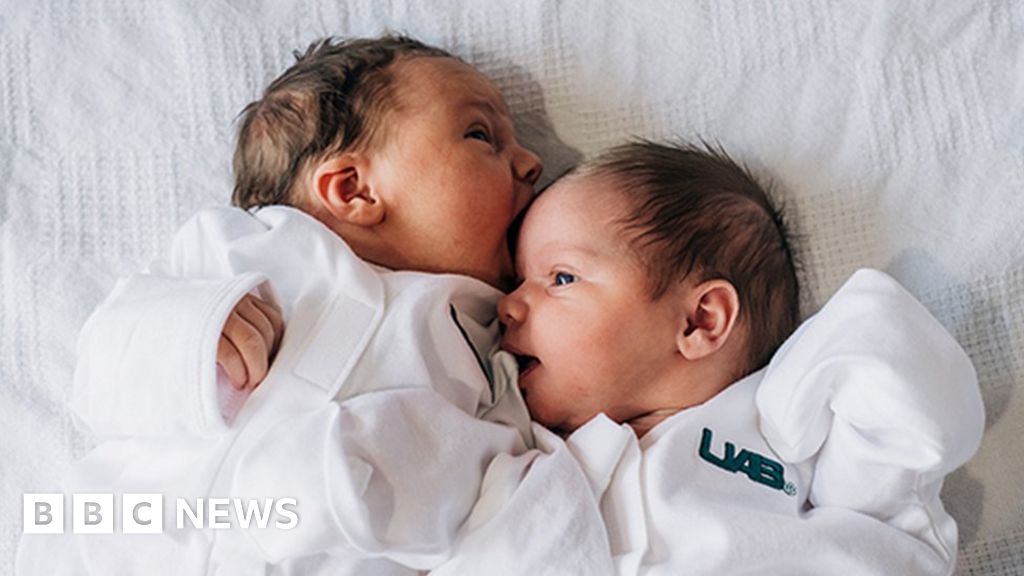Kelsey Hatcher, 32, delivered one daughter on Tuesday, and a second on Wednesday, at the University of Alabama at Birmingham (UAB) Hospital.
Announcing the arrival of her “miracle babies” on social media, Ms Hatcher hailed the medics as “incredible”.
The girls are described as fraternal twins - with rare separate birthdays.
Hatcher said the family was now back at home and could “enjoy the holidays”. She had previously expected a Christmas due date.
The mother was told at age 17 she had a double uterus (uterus didelphys) - which the UAB described as a rare congenital anomaly affecting 0.3% of women.
And the odds of becoming pregnant in both uteri - a dicavitary pregnancy - were even slimmer, at “one in a million”, according to the UAB.



0.3% of all women isn’t even that rare. nor is one in a million [pregnancies]
That is rare, and being pregnant in both is what’s “one in a million.” Have you heard of this happening before?
I get where the other poster is coming from tho, it sounds like 3500 women alive right now will have this type of pregnancy (1 in a million of 3.5bn women)
However, I think its of the .3% that are born dicavitary, there is THEN a 1 in a million shot to have both uteri fertilized, which means it would only happen once every few generations.